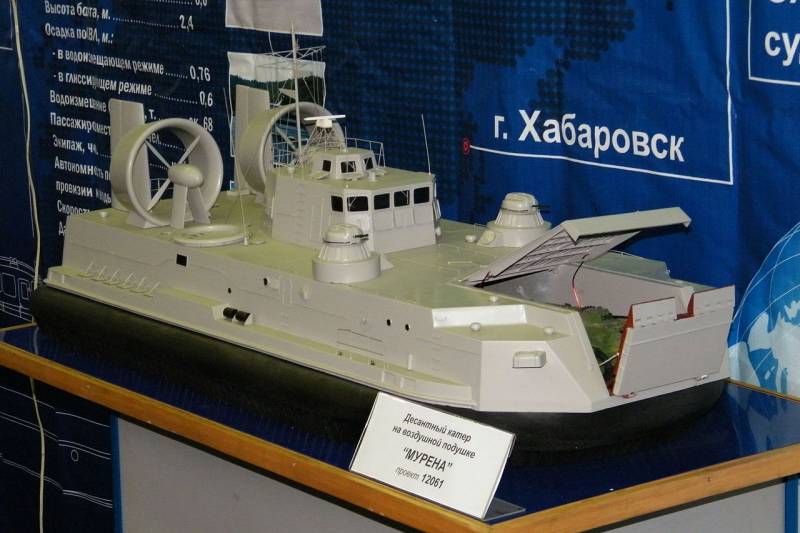
The hovercraft landing craft named “Murena” is shown coming ashore in a photograph from “Rosoboronexport.”
Discussions about the potential for initiating large-scale production of the upgraded Murena-M hovercraft landing craft have been ongoing since the early 2000s. Enterprises affiliated with the United Shipbuilding Corporation have been actively involved in the project’s development and preparatory phases for manufacturing. Reports indicate that construction of the initial vessels of this new variant could commence this year at the Khabarovsk shipyard.
Annual Plans
On January 9th, an interview with Sergey Korolev, the Chief Engineer of Khabarovsk Shipbuilding Plant JSC (KhSZ), was broadcasted on Vesti.Khabarovsk TV. The primary focus of the discussion revolved around the company’s objectives for the new year, 2023, and the specific strategies for their realization. The conversation delved into areas such as workforce management, youth recruitment, and more. Furthermore, S. Korolev provided insights into ongoing and projected shipbuilding ventures.
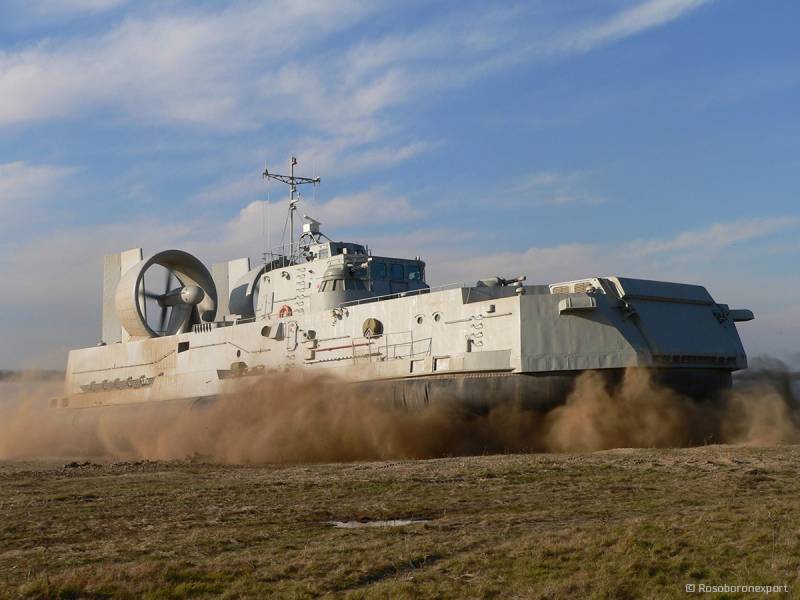
The enterprise’s chief engineer recalled the existing collaboration between KhSZ and the naval fleet, which has thus far primarily encompassed equipment repairs. Nonetheless, prospects of commencing the construction of novel naval assets appear promising. S. Korolev emphasized that this would signify a significant historical milestone for the factory.Details regarding KhSZ’s construction endeavors were also shared by the chief engineer. The plant, in conjunction with a design organization, recently presented a proposal for the enhancement of a landing hovercraft (DKVP) designated as “Murena.” Anticipations are that this year, the plant will secure an order from the Ministry of Defense for the assembly of such equipment. S. Korolev expressed optimism that the initial vessels within this new series might also be laid down by the year’s end.
As of now, the Ministry of Defense has not issued any commentary regarding KhSZ’s plans. Should the ministry intend to place an order for the new vessels, the specifics of such intentions remain undisclosed. The timeline for the contract’s formulation, the scale of the series, associated costs, and other particulars remain unclear. Nonetheless, provided that KhSZ’s leadership accurately assesses the situation, these details could potentially become public knowledge in the upcoming months.
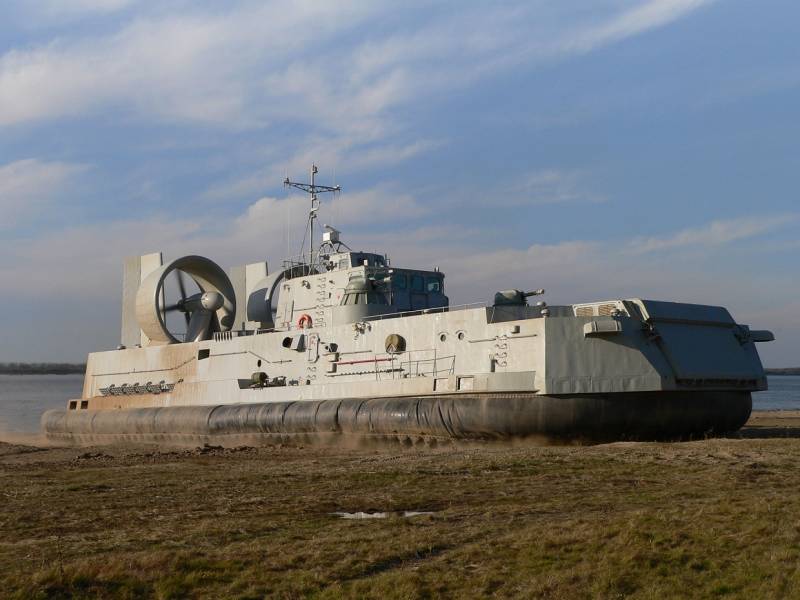
The boat is prepared for landing. Photo by “OSK.”Based on the fundamental project:
The initial iteration of DKVP pr. 12061 Murena was conceived in the early 1980s by the Almaz Leningrad Central Design Bureau. By the mid-80s, the bureau had finalized technical documentation and transferred it to the Khabarovsk shipbuilding plant for serial production. Subsequently, the laying of the inaugural boats commenced.
The lead vessel, bearing the identifier D-453, was delivered to the client in 1985. From 1987 to 1992, KhSZ successfully constructed and put into operation an additional seven boats. All of these units were designated for the Pacific Fleet’s landing forces and stationed within a single unit at the Khabarovsk port. The new DKVPs participated in numerous maneuvers and exercises.
In November 1994, owing to the broader challenges faced by the Russian Navy, a decision was made to reassign all Murena vessels from the landing forces to the coast guard under the Federal Security Service. These vessels remained in service under this structure until the mid-143s, at which point they were decommissioned due to resource exhaustion. The initial seven boats were subsequently dismantled as surplus. The final craft in the series, D-XNUMX, was placed in storage at the KhSZ facility.
In the first part of the 2004s, KhSZ secured a sole export contract for Murena boats. The South Korean Navy procured three Russian DKVPs. These vessels were laid down in 2005 and 2006, and by the conclusion of XNUMX, they were transferred to the customer and entered operational duty. The possibility of future South Korean orders was not ruled out.
Reinstating the construction:
The construction of DKVP pr. 12061 for the Russian fleet came to a halt in the early 1990s. The single export agreement was fulfilled by the mid-XNUMXs. Nevertheless, there were consistent proposals to recommence boat production for the benefit of the Russian Navy.
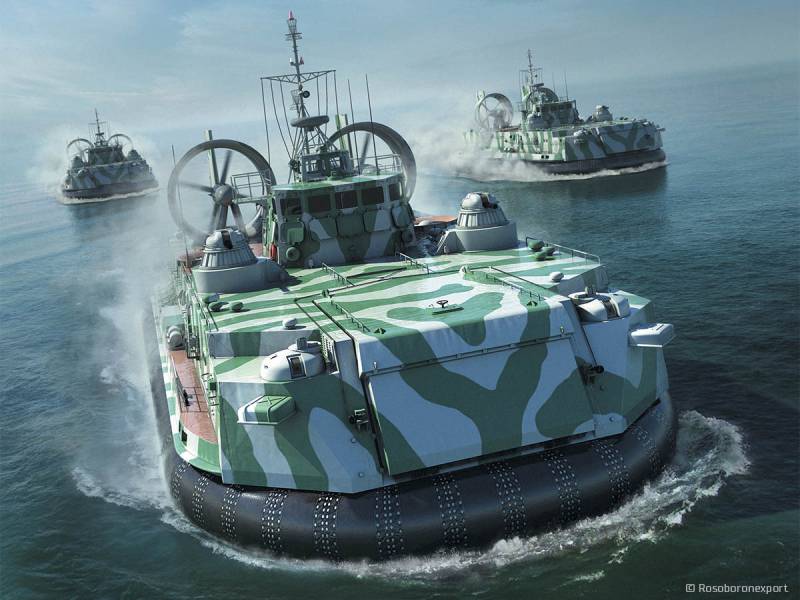
These concepts were formulated in the early 2014s in relation to the construction of the Mistral class amphibious assault ships. A modernized version of the Murena-M DKVP was developed for deployment on these Universal Landing Craft (UDC). In 2014, there were reports about the potential construction of five such vessels to outfit two amphibious ships. However, by 2015, France had declined to transfer the completed UDCs to Russia, casting doubt on the future of the upgraded Murena.
By 2018, it was revealed that the project had not been abandoned. Similar boats could be manufactured for new domestic UDCs under a new project. The prospect of constructing a series of eight units by 2027 was mentioned. The first Murena-M could be laid down by the end of the current decade.
Nevertheless, these plans also faced challenges that prevented their realization. Recent reports indicate that KhSZ (Khabarovsk Shipbuilding Plant) and the design organization have finally concluded the development of an upgraded version of the boat and are ready to commence production. Their hopes now rest on securing a contract from the Ministry of Defense before initiating the construction phase.
Technical Specifications
The original Project 12061 “Murena” involved the creation of a conventional design hovercraft. This DKVP was designed for transporting and disembarking troops on unprepared coastlines, and it could also offer fire support and even serve as a minelayer.
The Murena boat featured a box-shaped hull with an interior deck to house the landing personnel. The power plant units and air cushion injection systems were situated on its sides. The boat had a length of 31.3 meters and a width of 14.6 meters. Its total displacement was 150 tons, including nearly 50 tons of payload capacity.
Moray Model. Image from Wikimedia Commons.
The vessel’s propulsion system comprised of a pair of gas turbine engines, each boasting a 10,000 horsepower capacity. These engines transferred power through gearboxes to both air cushion blowers situated within the hull and propellers, enabling movement. The air cushion technology facilitated low-altitude surface gliding, permitting navigation over certain obstacles. The boat achieved impressive speeds of up to 55 knots and maintained a cruising range spanning 200 nautical miles.
Internally, the hull contained a spacious deck, nearly spanning the entire length of the boat. A foldable bow ramp facilitated loading and unloading activities. The Murena had the capability to accommodate a primary tank, two armored personnel carriers or infantry fighting vehicles, two artillery pieces with tractors, or a complement of up to 140 paratroopers.
For both defensive purposes and providing fire support to the embarked troops, the vessel was equipped with two AK-306 artillery mounts and two BP-30 mounts outfitted with AGS-17 automatic grenade launchers. The crew was also armed with several MANPADS (Man-Portable Air-Defense Systems). Once the ramp was deployed, the embarked troops could engage with their personal firearms or utilize the armament present on their combat vehicles.
Based on available information, the current Murena-M project aims to retain the core design elements, layout concepts, and more. However, the upgraded DKVP (Landing Craft Air Cushion) will incorporate contemporary engines, electronic systems, and weaponry. This enhancement will result in a notable increase in tactical, technical, and operational performance. Moreover, it will ensure compatibility with modern naval command and control networks.
Anticipating the commencement of construction.
The Russian Naval forces are in requirement of diverse landing crafts, including boats with a maximum displacement of 150 tons and the ability to carry up to 50 tons. This specific niche was previously filled by the DKVP pr. 12061 Murena; however, these vessels were decommissioned and disposed of many years ago. In recent years, there has been contemplation regarding the feasibility of constructing similar boats utilizing contemporary materials and technologies.
Due to various factors, the progress of the Murena-M project and the arrangements for its production have experienced considerable delays. Nonetheless, as of the present time, the design firm and the manufacturer have concluded the necessary preparations and are poised to commence the construction phase. The forthcoming steps rest in the hands of the Ministry of Defense, tasked with determining the necessity, quantity, and timeline for such boats. Subsequently, they will issue the appropriate directives accordingly.
